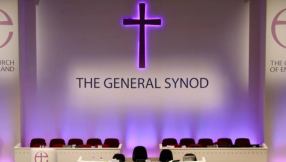Filming of the Hobbit gets underway in New Zealand
Director Peter Jackson, who directed all three Lord of the Rings films, made the announcement over Facebook on Sunday.
The first instalment of the Warner Bros and New Line Production film is not expected to be released until December 2012, while the second part is slated for release in 2013.
Tolkien, a devout Catholic, wrote The Lord of the Rings series in part to explore his religious faith, choosing not to do so in an explicit way but rather to highlight moral themes and philosophies.
The Hobbit, a prequel to The Lord of the Rings trilogy, stars Martin Freeman as Bilbo Baggins. Cate Blanchett, who appeared in The Lord of the Rings, will reprise her role as Galadriel, the Lady of Lothlorien in the prequel.
Props and costume production will be overseen by Weta Workshop, which has worked on King Kong, The Lord of the Rings trilogy, and The Chronicles of Narnia series.
Production for the two-part feature started after months of setbacks ranging from labor disputes to natural disaster.
Last year, Warner Bros and New Line considered moving production from New Zealand to eastern Europe after unions threatened to strike in a row over wages.
Thousands of irate demonstrators took to the streets demanding that the production stay in New Zealand.
By the end of October 2010, the New Zealand government passed legislation to improve tax breaks and to change labour laws so that production stayed in the country.
Then in January, Jackson was hospitalised with a perforated ulcer and in the following month, a 6.3-magnitude earthquake struck the city of Christchurch, New Zealand.
Besides being an accomplished writer, J R R Tolkien was noted for his friendship and rivalry with Christian author and lay theologian C S Lewis.
The men first met in 1926 during a faculty meeting, discovering a common interest in poetry, language, myth and storytelling. The two quickly became friends, bonding over their shared experiences as World War I veterans. A devout Catholic, Tolkien led Lewis’ conversion from atheism to Christianity in 1931. Lewis, however, exasperated Tolkien by accepting the protestant Anglican faith instead.
Tolkien published the Hobbit in 1936, spawning The Lord of the Rings universe. It has been noted that Tolkien’s conversations with Lewis provided some of the basis for the series.
Lewis gradually became the celebrated “everyman’s theologian” publishing theological classics such as The Screwtape Letters. This disturbed Tolkien who opted for a more quiet and devout existence.
In 1947, Lewis graced the cover of Time Magazine and his fame eclipsed that of Tolkien’s with the release of the Narnia series throughout the 1950s. Lewis forever endeared himself to modern theological thought with the release of his influential book Mere Christianity in 1952.
Besides not seeing eye-to-eye on theology and fame, both Lewis and Tolkien criticised each other's literary style.
Lewis published books as quickly as he could finish writing them. Tolkien, the ardent perfectionist, took almost 17 years to complete The Lord of the Rings series. Tolkien did his utmost to hide the religious themes within The Lord of the Rings series, while Lewis’ Narnia series was rife with Christian allegory.
Despite their differences, both authors continued to inspire each other at critical moments in their respective career.
The friendship eventually fell apart after Lewis married an American divorcee – which Tolkien disapproved of because of his Catholic faith. Afterward, the men did not see each other again.
Lewis died in 1963, while Tolkien passed away a decade later.
In an ironic twist, both Lewis and Tolkien’s works have gone forward to become beloved classics read by believers and non-believers the world over.













